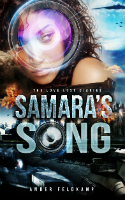I finally think I’ve narrowed down the most stressful aspect of self publishing — at least for myself. Writing isn’t hard. Promotion isn’t hard (when I’m not being excessively lazy). Formatting isn’t even that hard.
You know what is hard? Coughing up the dough needed to publish the most professional product possible. In the grand scheme of things, $300 isn’t really that big of an investment. But when you’ve got a baby on the way and are living off only one stable income, the idea of parting with any chunk of cash is insomnia-inducing at best.
Unfortunately, getting a job while nine months pregnant without a car and while living on the economy in Germany is much easier said than done. So I did what I always do when I get the sudden burst of ambition to up my income: consulted Dr. Google and circled the drain for a few hours contemplating jumping head first into dangerous sideline projects like stock market investment and domain flipping. Of course, diving into those kinds ventures without experience is a great way to break your neck — er, bank.
What’s a girl to do?
I briefly contemplated returning to the soul-sucking world of freelance writing. One click on Elance and the disillusionment came rushing back. Yeah. No thank you, not interested. Finally I’ve settled on two work-from-home ventures that so far have become promising prospects:
- Short Romance Writing: Yes, I’m funding my writing by… well writing. Romance, especially steamy romance, has this weirdly lenient readership that is willingly to pay $2.99 for a 3-6k word story. I tested this theory by releasing a hot and humorous romance short of 5k words last week. It’s already sold four copies. That’s $8.36 in royalties. That’s right, this piece that took me less than a day to craft has earned more royalties in direct sales than my novella that took me a month to write. Want to know how much I invested in my short story? Four dollars on a stock photograph. That’s it. It’s already profitable (even if marginally so). Now I’ve set aside one day a week to publish a new short (serialized with the intention of bundling, of course). Sadly, that one day will probably be more lucrative than the six others I dedicate to writing what I love.
- Cover Designing: (This is where I do that lovely shameless plug thing. Don’t judge me too harshly.) A couple of days ago I was doodling in photoshop, as I often do whilst I’m suffering from a bout of procrastination, when I got the idea to turn my mouse scribbles into pre-made cover art for other self publishers. I took the idea to my favorite forum and was encouraged enough by the feedback to open up yet another website: http://www.premade-covers.com. I can usually create 1-2 designs a day and am selling the covers at a flat rate of $35 per. The beauty of the whole thing is that the doodles are something I do for fun anyway when I’m in that distracted stage of writing. Even one sale will make the venture profitable (and joy, I’m currently working with my first potential client).
In total, I spend about two days a week on sideline projects and the other five dedicated to working Piper’s Peace. This minimal investment of my time has actually done wonders in to liberate me from the writer’s block that was dropped on my wrists. Turns out it wasn’t a writer’s block at all, but merely a mental block that couldn’t get around the looming fear that my expenses would eventually out weigh anything I might reap from this project. Now I can get back to writing for the love of it (and leave my shorts to writing for the monetary gain).








